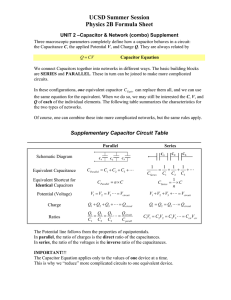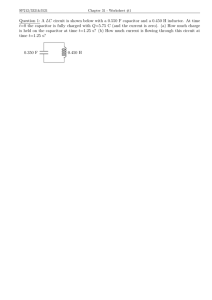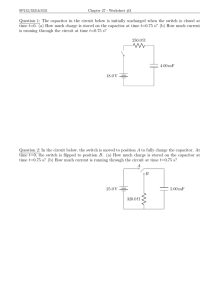SP212‐Spring‐2016 CH‐31 Assignment
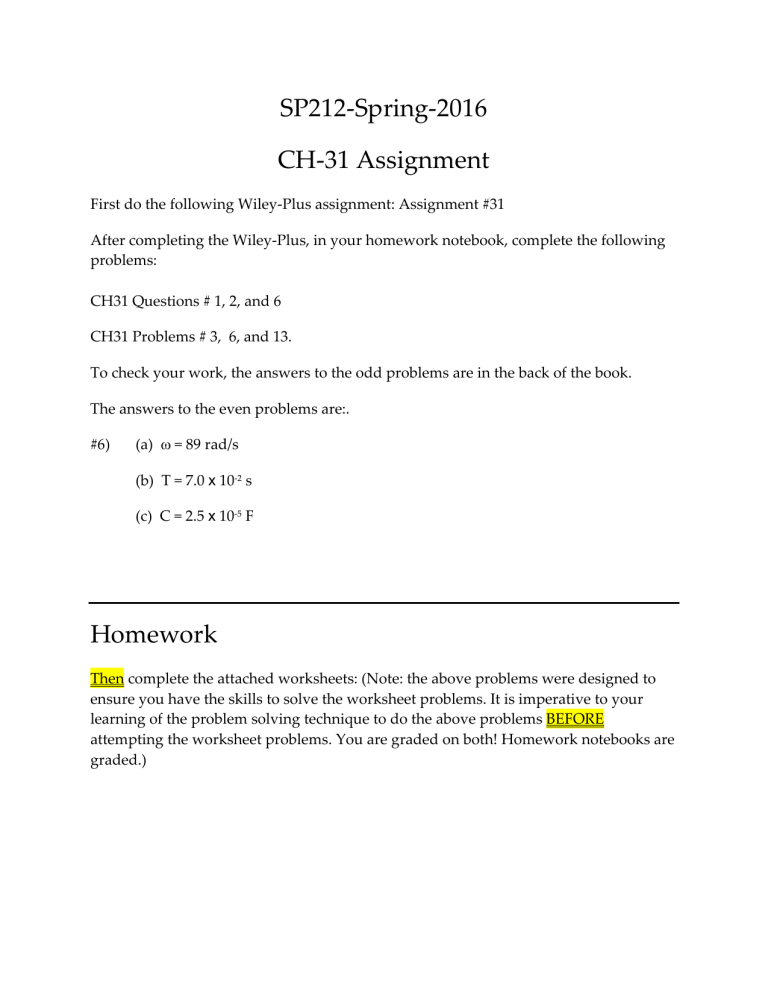
SP212
‐
Spring
‐
2016
CH
‐
31
Assignment
First do the following Wiley ‐ Plus assignment: Assignment #31
After completing the Wiley ‐ Plus, in your homework notebook, complete the following problems:
CH31 Questions # 1, 2, and 6
CH31 Problems # 3, 6, and 13.
To check your work, the answers to the odd problems are in the back of the book.
The answers to the even problems are:.
#6) (a)
= 89 rad/s
(b)
(c)
T
C
=
=
7.0
2.5
x x
10
10
‐
‐
2
5
s
F
Homework
Then complete the attached worksheets: (Note: the above problems were designed to ensure you have the skills to solve the worksheet problems.
It is imperative to your learning of the problem solving technique to do the above problems BEFORE attempting the worksheet problems.
You are graded on both!
Homework notebooks are
graded.)
CH ‐ 31 ‐ 1:
For each of the equations below,
1) State what each term is in your own words …
2) What the units of each term are…
3) What is the general use of that equation in your own words?
A.
B.
√
C.
D.
Draw and label the Electromagnetic Oscillation showing the eight major points in its period; include key information about each point.
(hint: page 904.)
CH ‐ 31 ‐ 2:
A capacitor in an LC oscillator has a maximum potential difference of 15 V and a maximum energy of 360 μ J.
At a certain instant the energy in the inductor is 320 μ J.
At that instant what is the potential difference across the capacitor?
Show all work:
CH ‐ 31 ‐ 3:
An LC circuit has a capacitance of 30 μ F and an inductance of 15 mH.
At time t = 0 the charge on the capacitor is 10 μ C and the current is 20 mA.
The maximum charge on the capacitor is:
Show all work:
CH ‐ 31 ‐ 4:
A Capacitor of capacitance 158 μ F forms part of an LC circuit which oscillates at
8.15
kHz, with a current amplitude of 4.21
mA.
What are a) the inductance, b) the total energy in the circuit, and c) the maximum charge on the capacitor?
Show all work:
CH ‐ 31 ‐ 5:
In a certain LC circuit, the capacitance is 4.00
μ F, the maximum voltage on the capacitor is 1.5
V and the maximum current is 50 mA.
How much time is required for the charge on the capacitor to go from zero to a maximum value?
Show all work:

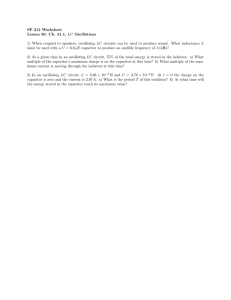

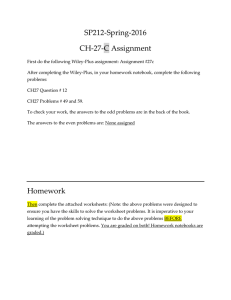

![Sample_hold[1]](http://s2.studylib.net/store/data/005360237_1-66a09447be9ffd6ace4f3f67c2fef5c7-300x300.png)
